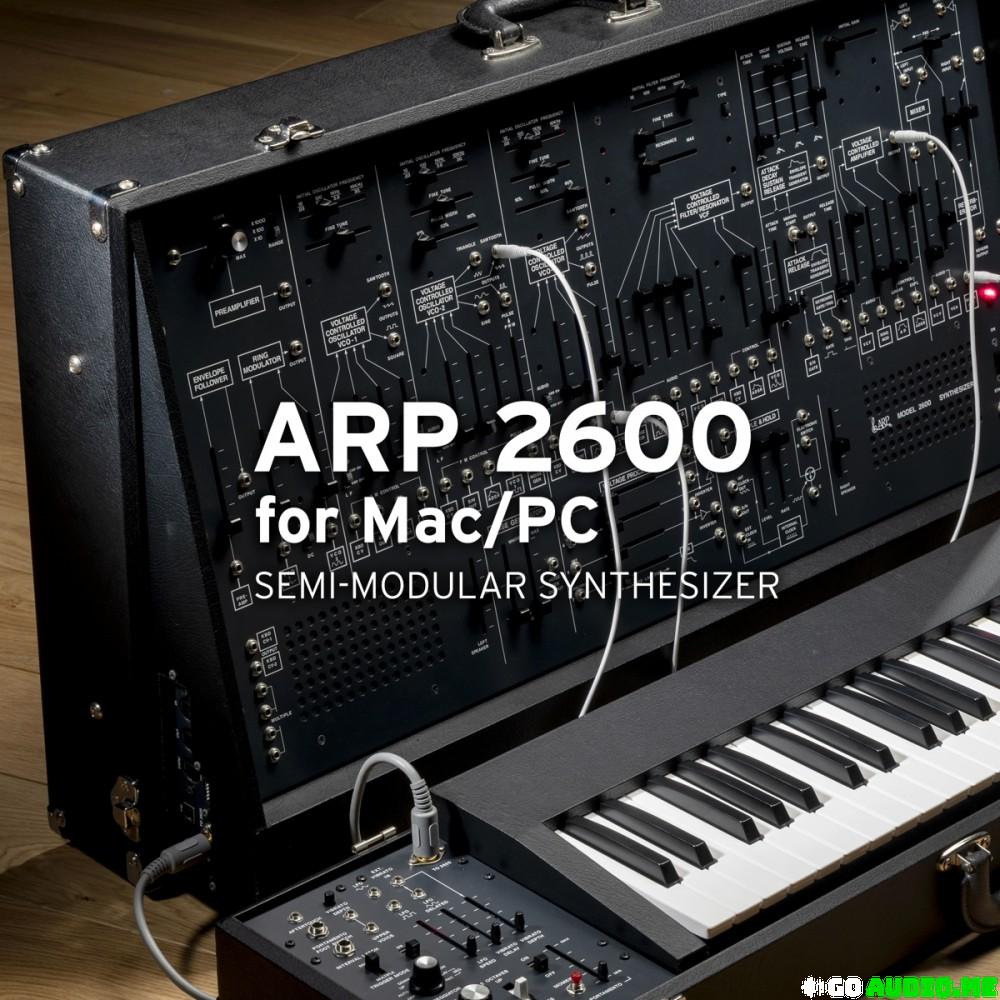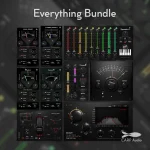KORG Software ARP 2600 v1.0.5
The one and only ARP 2600. The iconic ARP 2600. It’s the one synth you can expect to see in every major studio. They demand astronomical prices on the second hand market. When KORG released the limited- edition ARP 2600 FS in 2020, they sold out immediately world-wide. Now, KORG is pleased to present the first truly accurate software re-creation of this essential synthesizer: the KORG Collection ARP 2600.
KORG’s proprietary CMT technology faithfully reproduces the distinctive waveforms and filters, the custom LFO and envelope shapes, the many subtle nonlinearities, even the behavior of the patch panel – unlike any other 2600 software instrument. Thanks to this obsessive attention to detail, you can open the original ARP 2600 Patch Book (available as a free PDF on KORG’s website), hook up each of the 100 patches on screen, and they will sound just like an authentic ARP 2600 – something that no other 2600 plug-in can do.
Bringing the 2600 into the modern age
Preserving the fantastic sound quality, incredible flexibility, and quirky attitude of the original was only the beginning. To truly honor the legacy of this legendary instrument, we asked ourselves: if ARP redesigned the 2600 today, what would it be like? In response we made many improvements, including adding a second filter, a drive section, new modulation sources, extensive MIDI control, a sophisticated sequencer, up to 16-voice polyphony, and much more – all while keeping the spirit of the original ARP 2600 design.
Beauty in the details
Our engineers spent considerable time understanding every detail of the original and modern schematics, poring over the original 2600 manuals, testing with oscilloscopes, and most importantly listening.The original AR and ADSR envelopes, for example, might seem simple – but it took a lot of time and tweaking to get them just right. The oscillator waveforms are correct, including the slight imperfections that add a unique brightness (especially for the triangle and sine). We modeled both of the original VCF modules, the 4012 and the 4072, with a switch to select between them. We included all of the many saturation points on the original hardware, with subtle distortions that bring life to the sound. Extensive anti-aliasing techniques spread throughout the different modules let us deliver truly premium audio quality. KORG’s Component Modeling Technology (CMT) includes variations between analog components, just as you’d find with multiple hardware 2600s, to deliver natural richness when playing polyphonically.
Outside the patch panel, there are 20-odd Trim Pots to select between behaviors of different 2600 vintages, dial in calibration details such as square wave width and triangle wave symmetry (just like the original hardware), and more.
Preserving and expanding the 2600 spirit
Even more than most vintage synths, the 2600 has a character all its own. To begin with, no two sections are alike; each has its own purpose (often more than one) and capabilities to match. Each of the three VCOs has different features.The two envelopes work very differently. There are many hidden quirks, such as different ranges for identical-looking control inputs, phase inversions, and unusual waveforms. It’s a carefully considered instrument, but it also feels like a collection of bespoke modules. The differences guide the eye, and also simply make it fun to play around with. There’s a constant sense of discovery, of “wow, I can make it do that, too!”
When adding all of the new capabilities, we were determined to preserve the spirit of the original instrument. So, we resisted the modern urge to unify and standardize. Each of the VCOs is still different. When we added an envelope and an LFO, we made sure that they were different from the originals, enabling new sounds instead of just “more.” When we added a second filter, we made it entirely different from the main VCF. Each new feature speaks with its own voice. All of the additions have sensible normalled connections, incorporating the new LFO, envelope, and sequencer.
We also kept all of the controls of the original instrument, and even with all of the additions, we preserved the basic layout. If you’re familiar with the old 2600, or KORG’s new 2600 FS and 2600 M, you’ll feel right at home – but with even more to play with.
Release Notes
v1.0.5 August 15 at 10:02
– Resolved graphics issues with the patch panel on specific Windows GPUs.
– Improved patch panel rendering on non-HiDPI displays when the UI size is set greater than 100%.
– Improved CPU usage.
– The initial state of the Sync to Host button is now shown correctly. Additionally, the Tempo field is now grayed out when Sync to Host is enabled.
– Volume and Tempo now support automation.
– For Volume, VCO and VCF Frequencies, and various effects parameters, DAW automation values now appear as a percentage of the control position. Previously recorded automation will still play back correctly.
– Some inapplicable items were incorrectly included in the published automation parameters. This has now been fixed. Previously recorded automation will still play back correctly.
– Improved synchronization between LFOs and the Motion Sequencer when the Motion Sequencer is switched from off to on while voices are sounding.
– In the Sound Browser and the Librarian window, Categories and Collections are now kept sorted even when initial selection is missing, and when showing “All Data” in the Librarian.
– The Performance, Effect, Scale, and Set List selectors include a “filtered list” icon between the inc and dec arrows. This icon shows that the list is affected by settings in the Sound Browser window (such as selected Categories, Collections, and text search). Clicking the icon clears the filters without needing to open the Sound Browser. There is now more space between the icon and the inc/dec buttons, which makes it easier to click.
– When an updated version is detected, the download link now uses https instead of http. The previous use of http caused a security warning to appear in Chrome browsers.


![KORG Software EP-1 v1.0.4 [MAC]](https://www.goaudio.net/wp-content/uploads/2024/08/KORG-Software-EP-1-v1.0.3-60x60.png?v=1723304688)





![Toontrack Hollowbody EBX [WIN+MAC]](https://www.goaudio.net/wp-content/uploads/2024/09/Toontrack-Hollowbody-EBX-150x150.png?v=1726103695)
![Toontrack LATEST RELEASES MIDI BUNDLE [SEP 2024]](https://www.goaudio.net/wp-content/uploads/2024/09/gandr-collage-11-150x150.jpg?v=1725764744)
![Blockbuster Sound Sand Dune & Mockingbird [BUNDLE]](https://www.goaudio.net/wp-content/uploads/2024/08/blockbuster-sound--150x150.png?v=1724378090)

![Blockbuster Sound Mermaids Sirens & Horror Pack [BUNDLE]](https://www.goaudio.net/wp-content/uploads/2024/08/Blockbuster-Sound-150x150.png?v=1723854097)



![Toontrack LATEST MIDI PACK [MARCH 2025]](https://www.goaudio.net/wp-content/uploads/2025/03/Toontrack-LATEST-MIDI-PACK-MARCH-2025-150x150.png?v=1743055485)


